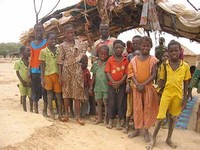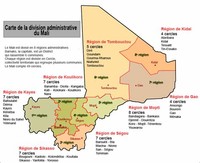Facts about Mali

Mali's constitution protects freedom of the press, and its broadcast and print media are considered among the most free on the continent.

Mali is among the poorest countries in the world, with 65 percent of its land area desert or semi-desert.

The Republic of Mali, under Modibo Keпta, withdrew from the French Community on September 22, 1960.

Mali was invaded by France starting in 1880 and then annexed as an overseas department.

The Mandй peoples settled the Sahel, including present-day Mali, and formed a succession of Sahelian kingdoms, including the Ghana Empire, the Mali Empire, and the Songhai Empire.

Mali is the home of some of the stars of African music, and the stardom of the late Ali Farka Toure in particular drew tourists and record producers to Bamako.

In 1992, Alpha Oumar Konarй won Mali's first democratic, multiparty presidential election.

The Malian legal system is largely defined by the country's former colonial status under France.

Mali has urged that richer nations drop their subsidies to cotton farmers, arguing that they depress prices and restrict its farmers' access to export markets.

Mali's population consists of diverse sub-Saharan ethnic groups sharing similar historic, cultural, and religious traditions.

Mali is mostly flat, rising to rolling northern plains covered by sand, with savanna around the Niger River in the south.

Mali is heavily dependent on foreign aid and vulnerable to fluctuations in world prices for cotton, its main export along with gold.

About 70 percent of Malians, especially women, produce arts and crafts, including leather work, gold jewelry, wood carvings, pottery, basketry, and hand-woven blankets and cloth.

Mali borders Algeria on the north, Niger on the east, Burkina Faso and the Cфte d'Ivoire on the south, Guinea on the southwest, and Senegal and Mauritania on the west.

At 478,734 square miles (1,240,000 square kilometers), Mali is the world's 24th-largest country (after Angola).

The constitution defines Mali as being a multiparty democracy and prohibits parties based on ethnic, religious, regional, or gender lines.

Approximately 90 percent of Malians follow Sunni Islam, but not always to the exclusion of traditional religious beliefs and practices.

Mali is divided into eight administrative regions, which are made up of districts.

Under Mali's 1992 constitution, a president is elected for a five-year term as chief of state and commander-in-chief of the armed forces.

Several multinational corporations are increasing their gold mining operations, and Mali has emerged as the third-largest gold producer in Africa, after South Africa and Ghana.

The country is named after the Mali Empire, one of several pre-colonial empires and kingdoms, and is the site of the legendary Timbuktu, a key trading city at the time.

Almost one-third of Mali's population depends on cotton for their livelihood.

Mali, officially the Republic of Mali, is a huge, landlocked nation in West Africa that is about two-thirds desert.
Mansa Musa



